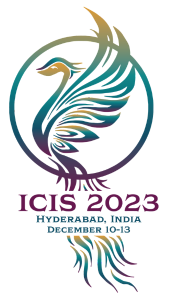Paper Number
2009
Paper Type
Completed
Description
Smart City initiatives are gaining popularity, but their Digital Transformation (DT) process remains unclear. This paper investigates the DT process in Smart Cities through an empirical case study involving multiple government councils. We examine how stakeholders coordinate resources across organizational boundaries throughout the process. The paper presents a resource rationalization process model that promotes resourcefulness by enabling organizations to problematize, solve, and activate their resources. We provide insights into how councils shape resources, deploy common IoT systems, and transition from problem-solving to activation, despite differing short-term objectives. Resourcefulness is achieved theoretically by reshaping and reorganizing shared resources. Practically, this study offers practitioners guidance on restructuring, bundling, and leveraging resources to attain positive outcomes from DT, even with diverse objectives.
Recommended Citation
Hoblos, Nizar; Sandeep, M.S.; and Pan, Shan, "Smart City Digital Transformation Across Organisational Boundaries: A Resource Orchestration perspective" (2023). ICIS 2023 Proceedings. 11.
https://aisel.aisnet.org/icis2023/iot_smartcity/iot_smartcity/11
Smart City Digital Transformation Across Organisational Boundaries: A Resource Orchestration perspective
Smart City initiatives are gaining popularity, but their Digital Transformation (DT) process remains unclear. This paper investigates the DT process in Smart Cities through an empirical case study involving multiple government councils. We examine how stakeholders coordinate resources across organizational boundaries throughout the process. The paper presents a resource rationalization process model that promotes resourcefulness by enabling organizations to problematize, solve, and activate their resources. We provide insights into how councils shape resources, deploy common IoT systems, and transition from problem-solving to activation, despite differing short-term objectives. Resourcefulness is achieved theoretically by reshaping and reorganizing shared resources. Practically, this study offers practitioners guidance on restructuring, bundling, and leveraging resources to attain positive outcomes from DT, even with diverse objectives.
When commenting on articles, please be friendly, welcoming, respectful and abide by the AIS eLibrary Discussion Thread Code of Conduct posted here.



Comments
17-IOT